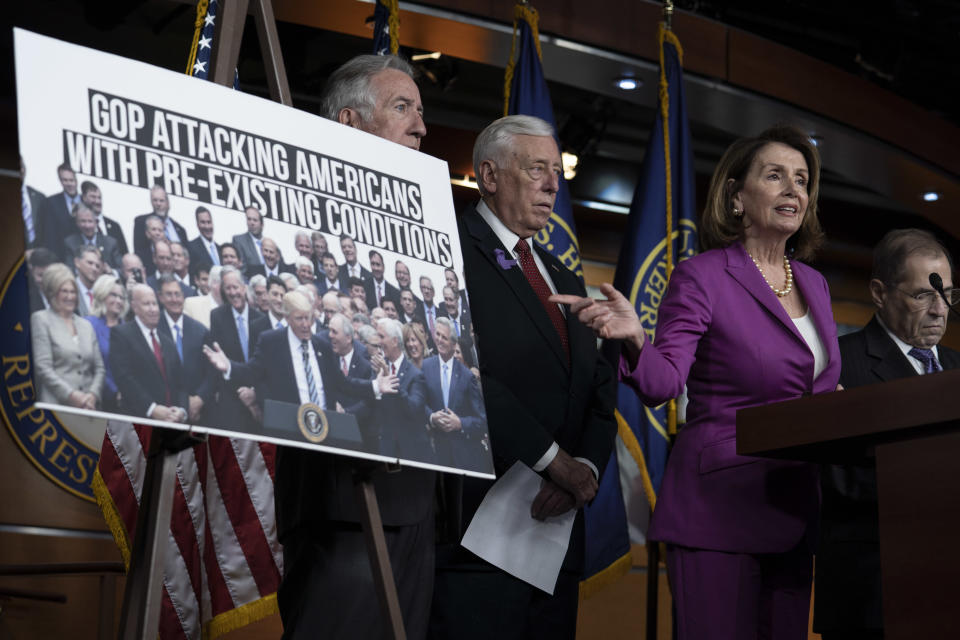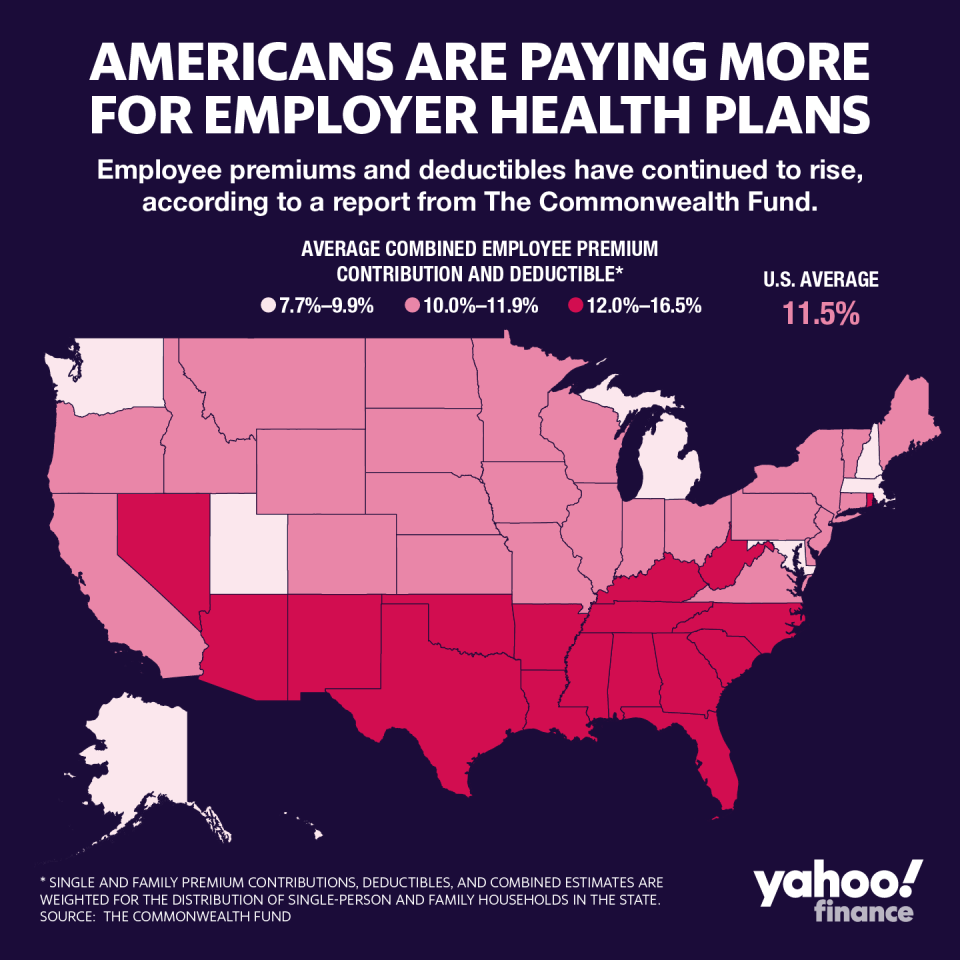The Supreme Court will consider Obamacare's constitutionality — and the outcome could bring 'total chaos'
The Supreme Court has agreed to hear an appeal case on the Affordable Care Act (ACA), commonly known as Obamacare, that could potentially invalidate the entire law.
On Dec. 15, 2018, a Texas judge ruled that Obamacare’s individual mandate was unconstitutional. Judge Reed O’Connor agreed with the plaintiffs who argued that the lack of a penalty invalidated the “individual mandate” provision of the law, and if that part of the law was now invalid, then the whole law was.
Democratic states and the House of Representatives appealed the decision, and the case made it all the way up to the Supreme Court in a case titled California v. Texas. The court has not yet scheduled oral arguments, but a decision is expected close to the end of its 2021 term. If the conservative-majority justices find the individual mandate unconstitutional, that could mean all of the ACA is unconstitutional.

“There could be essentially total chaos,” Cynthia Cox, director for the Program on the Affordable Care Act at the Kaiser Family Foundation, told Yahoo Finance. “There’s no replacement plan that is ready to go and so essentially what would happen next is possibly over a short period of time, or possibly immediately, we would start seeing the ACA being unwound. And the immediate effect would be that literally tens of millions of people could lose coverage and also even more people could have other changes to their coverage.”
According to the U.S. Census Bureau, the uninsured rate increased from 2017 to 2018 — the first year-to-year increase in the uninsured percentage since 2008 to 2009. In 2017, 25.6 million people were uninsured and that number increased to 27.4 million people in 2018, a 0.5% increase. A key part of Obamacare involved lowering the number of Americans without health insurance.
“What [would] happen is we’re going to go back to a marketplace that we had before the ACA,” Gerald Kominski, a professor in health policy and management at UCLA Fielding School of Public Health, told Yahoo Finance. “Roll back the clock 11 years. First of all, there are no longer subsidies for people to buy health insurance in exchanges. Exchanges go away.”

Kominski added that it would “be up to the court to determine whether or not the ruling is immediately effective or whether or not there is an opportunity. For example, most insurance enrollment takes place at the beginning of the calendar year and extends through that year. It could be that the eligibility would be allowed to continue for a year, but it’s possible that it could be effective immediately.”
Furthermore, others may lose certain benefits currently received through employer insurance.
“Tens of millions more who get their coverage through employers would also lose important benefits,” Tara Straw, a senior policy analyst at the Center for Budget and Policy Priorities, told Yahoo Finance. “As they did prior to the ACA, insurers could impose annual and lifetime limits on coverage, limit the ability of young adults to stay on their parents’ health plans, reimpose cost sharing for preventive services, and more.”
The individual mandate
The crux of the case is the individual mandate component of Obamacare. The individual mandate is the fee you pay if you choose not to buy health insurance if you can afford it.
Kominski explained why some are in favor of the mandate: “The argument in favor of the individual mandate when the law was passed is that if you do away with pre-existing condition exclusions and you create subsidies, then somebody who’s relatively healthy, not using a lot of health care right now, could say, ‘All right. Even with a subsidy, health care is expensive. It might cost me $100 a month. Why spend $100 a month? I can just wait until I get sick, sign up for insurance then, and I can’t be charged more because of a pre-existing condition. So maybe I can just take my changes and wait until I really need health insurance.’”
However, Republicans argued that the mandate was not only a form of a tax, but also a form of big government forcing citizens to purchase a product.

“The reason why the Supreme Court is considering the constitutionality of the mandate is because when the mandate was challenged previously, the Supreme Court affirmed it as constitutional as an exercise of the taxing authority of the federal government,” David Blumenthal, president and CEO of the Commonwealth Fund, told Yahoo Finance.
“They basically said that the mandate is really a tax,” he explained. “They didn’t rule on the constitutionality of the mandate as a mandate. They ruled on it on the constitutionality of the requirement to get insurance or be taxed, as an exercise of taxing authority.”
‘It’s completely intertwined in our health care system’
A recent Kaiser Family Foundation (KFF) survey found that 55% of Americans hold a favorable view of the ACA, its highest rating in a KFF poll in 10 years.
“It’s been in place for 10 years,” Cox said. “The entire health care system which is a fifth of our economy, is now entirely wrapped up in ACA. You can’t just hit a button and make the ACA go away. It’s completely intertwined in our health care system and it’s not obvious what happens when the ACA is overturned. It’s not like we can rewind the clock 10 years. There's a lot of consideration, both big and small, when it comes to thinking about how the law would go about being undone and the many, many ways it could affect the health care system.”
Over time, some of the most vulnerable Americans have become increasingly reliant on the ACA.
“It’s basically lower income people who are on Medicaid, the middle income people who are buying their own coverage, and also anyone who is sick or has a preexisting condition,” Cox said. “We’re talking about a large segment of the population that would be directly affected by this lawsuit… We’re talking about millions of people who have pre-existing conditions whose choices for insurance could change, especially if they have a change to their jobs.”

A December 2018 Gallup poll found that 27% of Americans have some form of a pre-existing condition, and 44% reside in a household with someone else who has one. Obamacare made it so that insurance plans (along with Medicaid and CHIP) were prohibited from rejecting, charging more, or refusing to pay for people with pre-existing health conditions. Additionally, the plan can’t raise rates or deny coverage.
“From the public standpoint, the 54 million Americans who have pre-existing conditions is much more relevant because that group includes many people who have been able to get insurance because of the law, and may have been previously insured but paid very high premiums, are now at risk of losing insurance because they become ill,” Blumenthal said. “The pre-existing condition issue is politically a much larger issue than the loss of insurance for people who never had insurance.”
Employee premiums and deductibles are already on the rise. A Commonwealth Fund study found that in 2018, it rose for both single-person and family policies to an average of $7,388. The total cost of premiums and deductibles came out to 11.5% of median income in 2018, up 7.8% from 2008. Those costs don’t factor in pre-existing conditions.

And that’s not the only thing at stake were the ACA to be ruled unconstitutional, according to Cox.
“It could mean there’s no longer a cap on out-of-pocket costs,” she said. “It could be that there’s a reinstatement of lifetime caps or annual caps on how much insurance will cover. There could also be waiting periods for people changing jobs before insurance kicks in. There are a variety of other ways this could play out that's not just about Medicaid expansion or exchange markets.”
An ACA repeal would be ‘particularly catastrophic for women’
The ACA has been particularly beneficial to women in America.
In 2008, nearly 17 million women did not have health insurance. Those numbers changed with the implementation of the ACA in 2010. By 2016, that number dropped to 10.5 million.
Obamacare implemented several crucial initiatives in terms of women’s health care. Specifically, the law banned insurance providers from charging women more than men for coverage and required that maternity and newborn care be a mandatory benefit “for individual market health plans.”
A repeal of the ACA “would be particularly catastrophic for women,” Sarah Christopherson, policy advocacy director for the National Women’s Health Network, told Yahoo Finance. “Not only did women gain the same protections as everyone else did — such as pre-existing conditions, lifetime and annual caps — women got a number of benefits just to women.”

These benefits include coverage for maternity services and not having to pay out of pocket for contraceptives.
“If the ACA were to be repealed by the Supreme Court, it would be catastrophic for everybody because the ACA is so deeply ingrained in the health system at this point, even the Trump administration’s own priorities, like opioids and prescription drug prices, all depend on the ACA to work,” Christopherson said.
Adriana is a reporter and editor for Yahoo Finance. She can be reached at [email protected]. Follow her on Twitter @adrianambells.
READ MORE:
Obamacare was revolutionary for women's health. The progress is now in danger.
Rising employee premiums and deductibles in the US are 'leaving millions of families exposed'
Read the latest financial and business news from Yahoo Finance
Follow Yahoo Finance on Twitter, Facebook, Instagram, Flipboard, SmartNews, LinkedIn, YouTube, and reddit.
